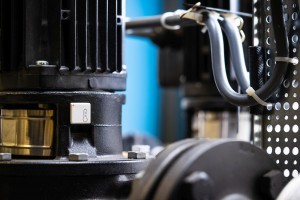Zollner Elektronik AG manufactures a sensor for Disruptive Technologies with which the Norwegian start-up wants to contribute to greater networking in the Internet of Things (IoT). To do this, the EMS company from Zandt first had to make the prototype reproducible. Disruptive Technologies has developed a tiny sensor that can be stuck almost anywhere and is the centerpiece of a solution that makes it easier to collect and evaluate data. The innovation was launched on the market in 2019.
 Simply stick it on and receive reliable measurement data: The world's smallest wireless sensor, developed by Norwegian startup Disruptive Technologies and transferred to large-scale production by Zollner Elektronik AG, can also be attached in hard-to-reach places.To translate the prototype into a market-ready product that can be mass-produced in large quantities, Zollner Elektronik AG spent two years setting up a complete customized production line and constantly improving it. To this end, it has adapted existing and familiar technologies to the new requirements and introduced new technologies. The line is capable of producing eleven million sensors per year and can be expanded to the targeted production of 35 million units.
Simply stick it on and receive reliable measurement data: The world's smallest wireless sensor, developed by Norwegian startup Disruptive Technologies and transferred to large-scale production by Zollner Elektronik AG, can also be attached in hard-to-reach places.To translate the prototype into a market-ready product that can be mass-produced in large quantities, Zollner Elektronik AG spent two years setting up a complete customized production line and constantly improving it. To this end, it has adapted existing and familiar technologies to the new requirements and introduced new technologies. The line is capable of producing eleven million sensors per year and can be expanded to the targeted production of 35 million units.
Pippa Boothman, Vice President Marketing & Communications at Disruptive Technologies, praises: "Zollner Elektronik AG is a great partner for Disruptive Technologies. With their uncompromising focus on manufacturability, reproducibility and quality, they have translated our concepts into stable high-volume production. Their network and knowledge of reliable suppliers and subcontractors have made it possible to set up automated processes for the assembly and efficient handling of our miniature devices."
Sensor solution with the potential to transform the entire living environment
The company founder of Disruptive Technologies found IoT-enabled devices too expensive and unwieldy for widespread use. He set out to change this in 2013 by developing a sensor measuring just 19 x 19 x 2.5 mm, which is the size of a computer key and as thick as a coin. The sensor can also be installed in hard-to-reach places, where it measures temperature or humidity, for example. It transmits its data to the Cloud Connector, which is also manufactured by Zollner. This is a connection station that forwards the data securely encrypted to the cloud. There it is permanently available in real time and serves as the basis for optimal resource management.
The sensor solution can be used for a wide range of applications, including monitoring cold chains to prevent food waste, monitoring substations to increase security of supply and monitoring the temperature in water pipes to prevent the development of harmful legionella bacteria. This solution also allows buildings to be monitored remotely, enabling the intelligent occupancy of desks, targeted cleaning, energy efficiency and sustainable operation. In factories and storage systems, the sensor solution from Disruptive Technologies can increase productivity, prevent downtime and reduce maintenance costs.
Semi-automated production line for mass production
Zollner Elektronik AG had to overcome several challenges in the production of the mini-sensor. For example, the fixed installation space for the mini sensor is extremely compressed. A tiny battery is mounted on a very thin circuit board. The assembly also has to be completely encapsulated in order to comply with the IP68 standard, among other things. The aim was to make the product completely waterproof and dustproof and to cover the industrial temperature range of -40 to +85 degrees Celsius.
The resulting production line uses techniques such as wire bonding, laser cutting, vacuum forming, resin casting and massive robotization. The combination of these techniques in an innovative way has resulted in a very cost-efficient and high-quality manufacturing process.
Bernhard Kiefl, head of the responsible business unit at Zollner Elektronik AG, says: "It was a huge task to translate the customer's requirements into a production system for high-volume manufacturing. We integrated numerous new technologies into the product line so that we could achieve the desired result. A lot of existing know-how was incorporated into the system, while at the same time we built up new expertise."


